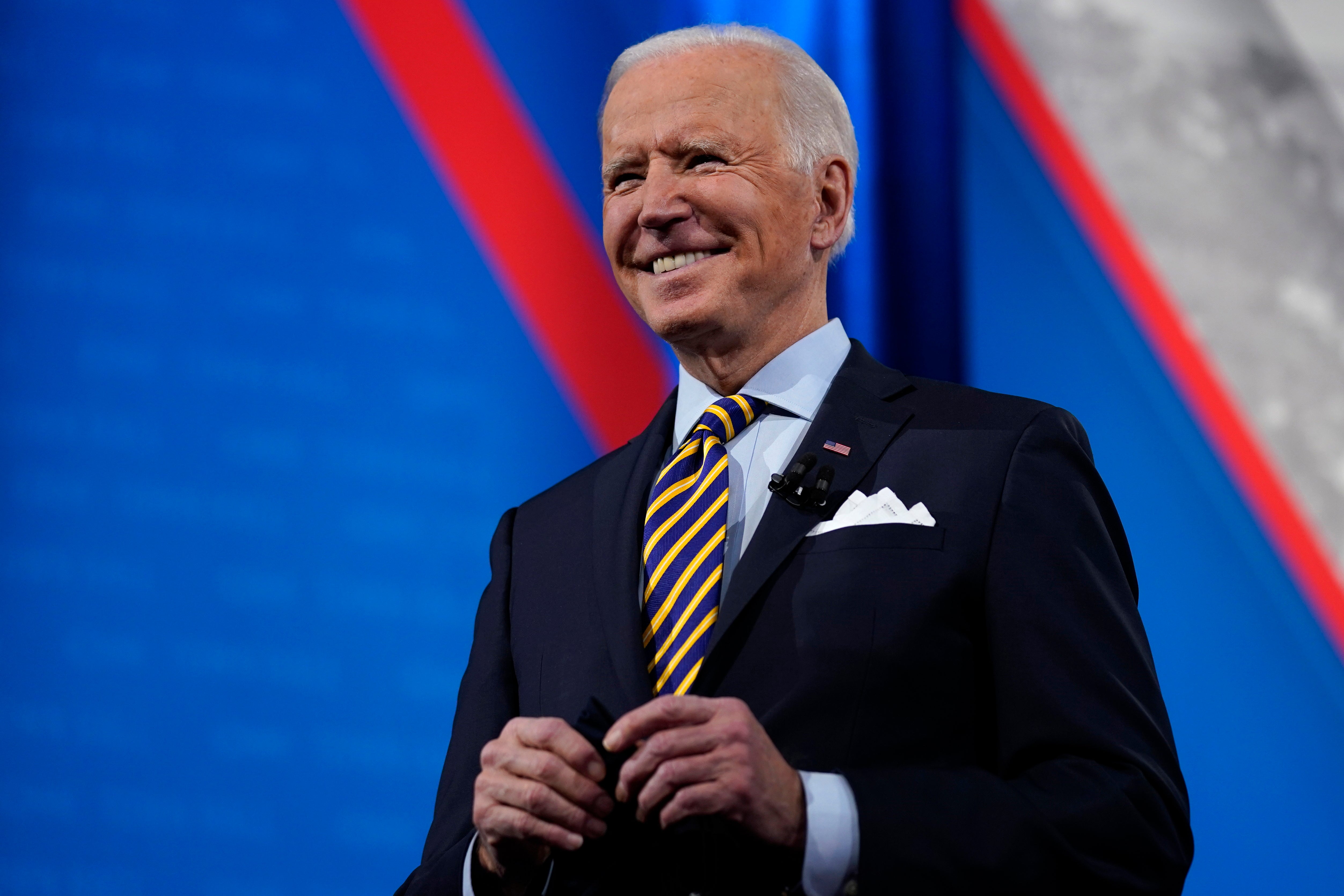AP FACT CHECK: Biden and his shifting goalposts on schools
How do you define success when it comes to reopening schools in the pandemic

How do you define success when it comes to reopening schools in the pandemic? President Joe Biden and his aides are having difficulty settling on an answer to that question.
At his town-hall forum Tuesday night, Biden denied that his administration ever thought one day of classroom instruction a week would be enough to declare victory in his pledge to get most schools for younger children open by spring. That's dubious, given the conflicting account provided by his press secretary last week.
Also at the event, Biden at one point said no vaccines had been deployed when he took office. It was a one-off slip. At other times in his remarks, he said millions of doses had been administered during the Trump administration and more accurately characterized the conditions he inherited.
From the CNN event in Milwaukee:
SCHOOLS
BIDEN, asked about assertions from the White House that at least one day a week of classroom schooling would deliver on his reopening pledge: "No, that’s not true. That’s what was reported. That’s not true. That was a mistake in the communication."
THE FACTS: That's a stretch. A mere mistake by the White House could have been corrected by the White House days ago.
The argument that four days of schooling at home and one in the classroom could constitute success drew plenty of criticism. So the White House has changed its tune on the 100-day goal and is aiming higher.
A week ago, White House press secretary Jen Psaki said Biden's goal "is to have the majority of schools — so, more than 50% — open by day 100 of his presidency. And that means some teaching in classrooms. So, at least one day a week. Hopefully, it’s more.”
A day later, she said the once-a-week minimum is “the bar of where we’d like the majority of schools across the country to be, which they’re not at this point in time, and we want to build from there.”
A day after that, she dodged a question about once-a-week classroom instruction except to acknowledge parents shouldn’t be satisfied with just that. Psaki began emphasizing the president's wish to see teaching fully restored to the classroom but didn't peg that to 100 days or any timetable.
Biden has already backpedaled on a related front. He pledged in December to get most schools reopened during his first 100 days, but specified last month that the goal applied only to schools that teach through eighth grade. On that point, Psaki closed out last week saying, “I’m not going to set a new goal today.”
Biden told his town-hall audience his goal is five days of classroom instruction and “I think we’ll be close to that at the end of the first 100 days.” On Wednesday, Psaki said classroom schooling one day a week “was our floor, it was not our ceiling," when she brought it up last week.
___
VACCINES
BIDEN, on the need to have more people administering COVID-19 vaccines: “It's one thing to have the vaccine, which we didn’t have when we came into office, but a vaccinator. How do you get the vaccine into someone’s arm?”
THE FACTS: That, of course, is wrong. Two vaccines were developed, under distribution and going into people's arms in the U.S. before Biden took office — just not nearly enough.
Americans started getting vaccinated in mid-December, the week after Britain delivered the first shots.
Biden's predecessor, Donald Trump, jumped on the mistake in an interview Wednesday with Newsmax. “I saw that he said that there was no vaccine when he came into office. And yet he got a shot before he came into office,” Trump said. “And it was already in early November that we announced it. ... And we were giving millions of shots and millions of doses. So he was either not telling the truth or he’s mentally gone. One or the other.”
Before his slip, Biden said 50 million doses were available when he became president but “there was nothing in the refrigerator figuratively and literally speaking,” meaning no backup stock to draw from in those early weeks.
___
PANDEMIC RELIEF
BIDEN cites an “overwhelming consensus ... among economists left, right, and center (that) we can’t spend too much” in pandemic relief.
THE FACTS: Not entirely accurate.
There is broad agreement that massive spending is required to counter the economic pain and meet the public-health needs of the pandemic — and that there are more risks to going too small than too big. But with regard to Biden’s specific plan, there are prominent dissenters and vigorous disagreement over how high to go.
Some economists look at the U.S. gross domestic product and see that the country is already near its pre-pandemic levels, so they argue for a smaller amount of relief than in Biden’s $1.9 trillion package. Others look at the levels of hunger, housing instability and unemployment, and see the need to go as big as what Biden has proposed.
Biden’s proposal won an endorsement from Kevin Hassett, who was Donald Trump’s top economist in the White House. But Larry Summers, who was Barack Obama’s top economist and Bill Clinton’s treasury secretary, warned that it could risk inflationary pressures not seen in a generation. While opinion about the package crosses political lines, it crosses both ways, pro and con.
___
Associated Press writers Josh Boak and Christopher Rugaber contributed to this report.
___
EDITOR’S NOTE — A look at the veracity of claims by political figures.
___
Find AP Fact Checks at http://apnews.com/APFactCheck
Follow @APFactCheck on Twitter: https://twitter.com/APFactCheck
Bookmark popover
Removed from bookmarks